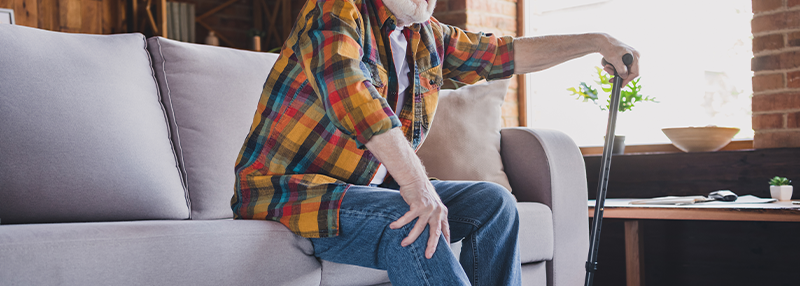Fall Prevention for Seniors: Ensuring Safety and Independence
Posted On: September 30, 2024 by CarePro Health Services in: Age In Place Falls

Falls are a significant concern for seniors, as they can lead to serious injuries and a loss of independence. According to the Centers for Disease Control and Prevention (CDC), falls are the leading cause of injury-related deaths among adults aged 65 and older. Each year, one in four older adults experiences a fall, but less than half report it to their doctor. Understanding the risks and implementing preventive measures can help seniors stay safe and maintain their independence.
The Impact of Falls on Seniors
Falls can have severe consequences for seniors, including fractures, head injuries, and even death. In 2021, falls caused approximately 38,000 deaths among those aged 65 and older. Additionally, falls are the most common cause of traumatic brain injuries (TBI) in older adults. Beyond physical injuries, falls can lead to a fear of falling, which may result in reduced physical activity and increased social isolation.
Common Risk Factors for Falls
Several factors can increase the risk of falls among seniors:
- Lower Body Weakness: Muscle weakness, particularly in the legs, can make it difficult to maintain balance.
- Vitamin D Deficiency: Insufficient vitamin D can affect bone health and muscle function.
- Balance and Gait Issues: Problems with walking and balance can increase the likelihood of falling.
- Medications: Certain medications, including sedatives and antidepressants, can affect balance and coordination.
- Vision Problems: Poor vision can make it harder to navigate obstacles.
- Home Hazards: Clutter, loose rugs, and poor lighting can create tripping hazards.
Effective Fall Prevention Strategies
Implementing the following strategies can significantly reduce the risk of falls:
- Exercise Regularly: Engaging in activities that improve strength, balance, and flexibility, such as tai chi or yoga, can help maintain physical fitness and reduce fall risk.
- Review Medications: Regularly review medications with a healthcare provider to identify those that may increase fall risk and explore alternatives if necessary.
- Vision Checks: Schedule regular eye exams to ensure optimal vision and update prescriptions as needed.
- Home Safety Modifications: Make the home safer by removing tripping hazards, installing grab bars in bathrooms, and ensuring adequate lighting throughout the house.
- Footwear: Encourage the use of non-slip, supportive shoes to improve stability.
- Vitamin D and Calcium: Ensure adequate intake of vitamin D and calcium to support bone health.
- Home Medical Equipment: Utilize home medical equipment such as walkers, grab bars, and lift chairs provided by CarePro Home Medical and Kelly’s Home Medical to enhance safety and mobility within the home.
The Role of Healthcare Providers
Healthcare providers play a crucial role in fall prevention. They can assess fall risk, recommend appropriate interventions, and provide resources for exercise programs and home safety modifications. The CDC’s STEADI (Stopping Elderly Accidents, Deaths & Injuries) initiative offers valuable tools and resources for both healthcare providers and seniors to help prevent falls.
Preventing falls is essential for maintaining the health and independence of seniors. By understanding the risk factors and implementing effective prevention strategies, seniors can reduce their risk of falls and continue to enjoy a high quality of life. At CarePro Home Medical and Kelly’s Home Medical, we are committed to supporting seniors in living safely and independently. For more information on fall prevention and other senior care services, visit our website.

0 comments